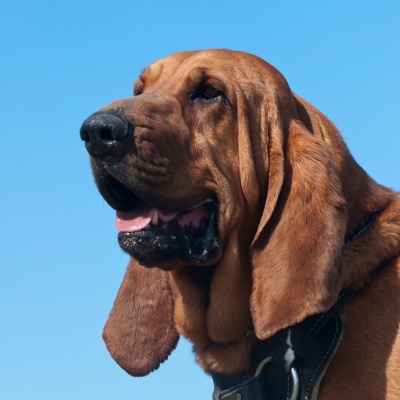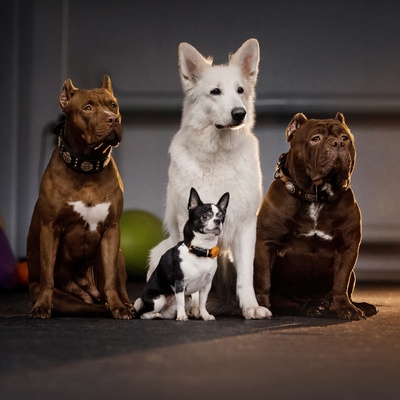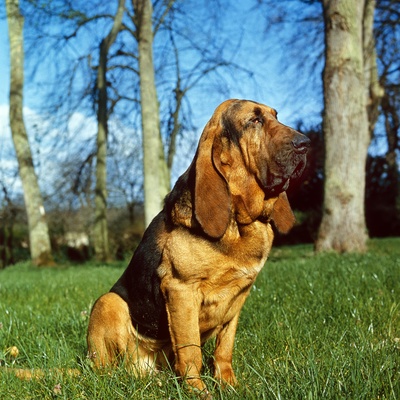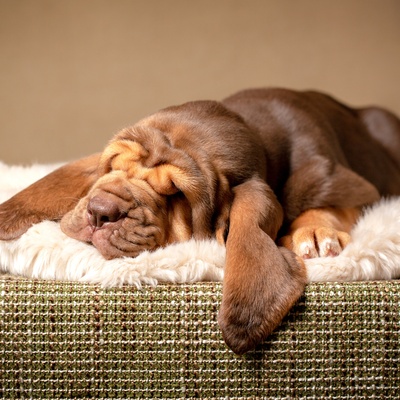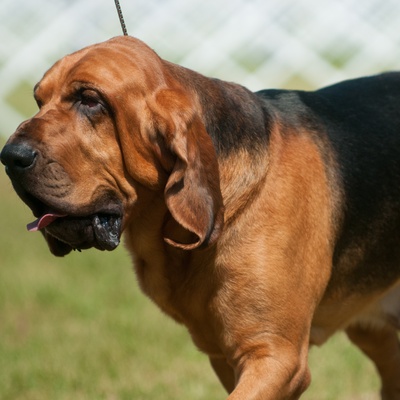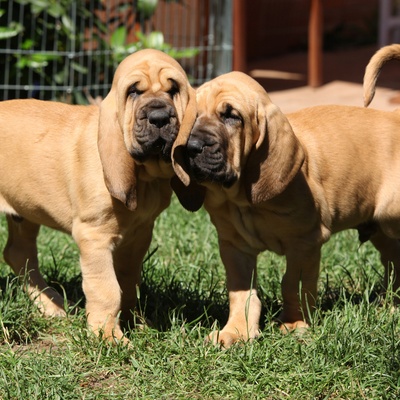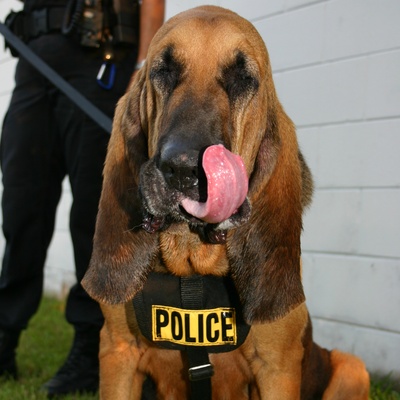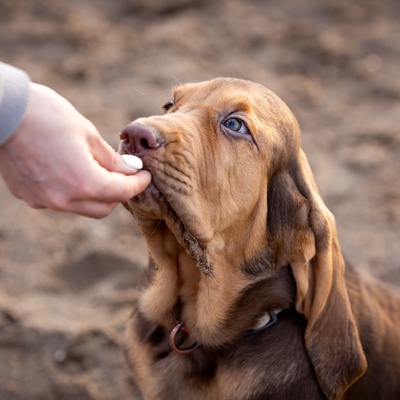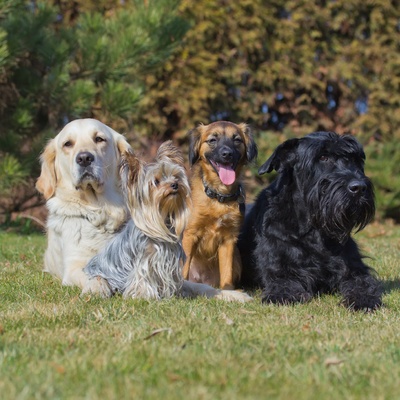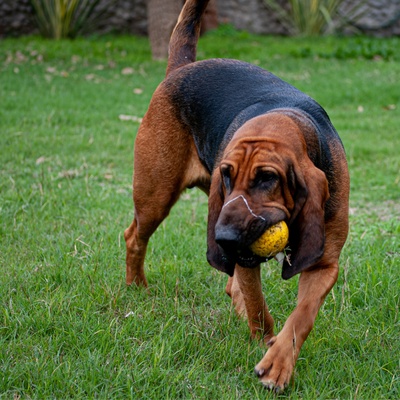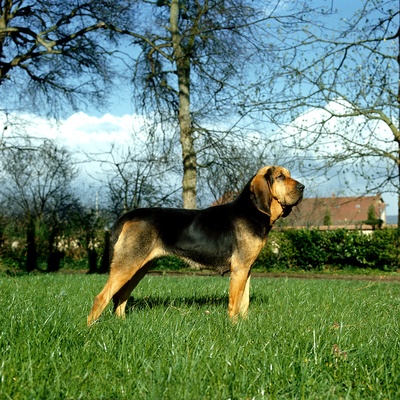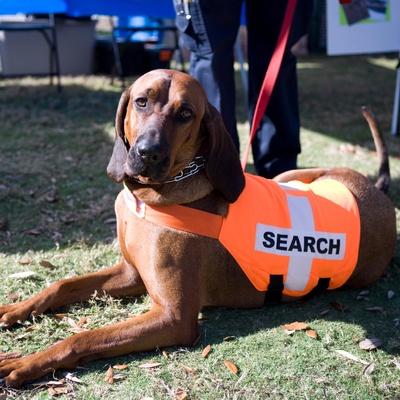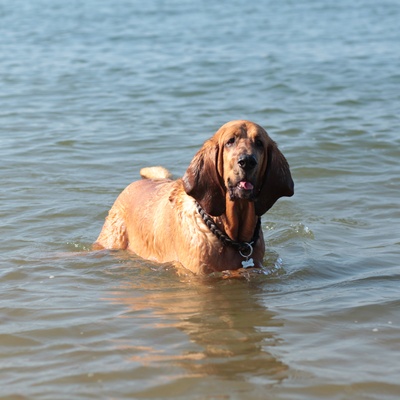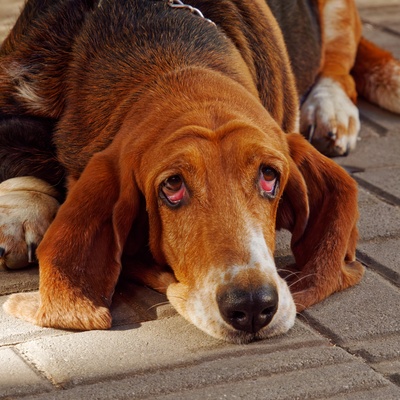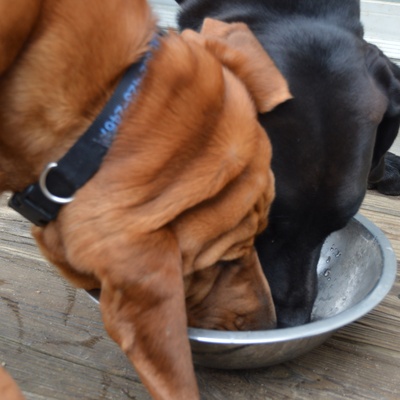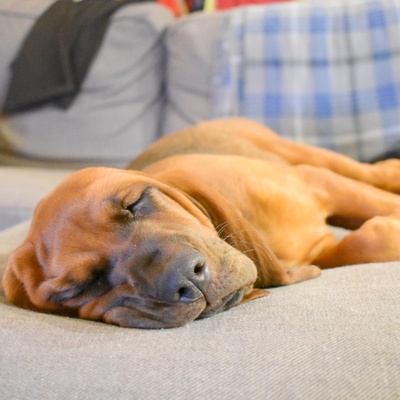Introducing the Bloodhound
Find out everything you need to know about the Saint Hubert: its characteristics, its behavior, its education, its price.
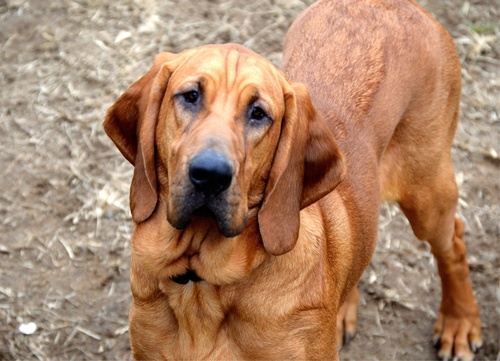
Find out everything you need to know about the Saint Hubert: its characteristics, its behavior, its education, its price.
The origins of the Bloodhound trace back to medieval Europe, specifically France and Belgium. These noble hounds were initially bred by monks in monasteries for their unparalleled tracking abilities.
Today, Bloodhounds are celebrated globally for their exceptional scent-tracking skills. They are brave and versatile dogs, excelling in various roles such as hunting, search and rescue, and law enforcement.
Known for their loyal and affectionate nature, Bloodhounds form strong bonds with their families and are incredibly sociable, often displaying their affection through gentle nuzzles and constant companionship.
This section outlines the unique features of the Bloodhound breed of dog.
The Bloodhound belongs to the hound group, known for exceptional scent-tracking abilities. These dogs are bred for hunting and search and rescue, characterized by a determined and gentle temperament.
Bloodhounds are large dogs. They typically stand between 23 to 27 inches at the shoulder and weigh between 80 to 110 pounds.
Bloodhounds have short, dense coats. Their fur is smooth and lies close to their body, providing adequate protection from various weather conditions.
Bloodhounds’ coats can vary, but the most common colors are black and tan, liver and tan, and red. Within these colors, shades can range from light to dark.
Bloodhounds adapt best to environments where they have plenty of space to roam. They thrive in homes with large yards or rural areas where they can exercise freely.
Bloodhounds are very friendly and sociable dogs. They are known for their compatibility with children and generally get along well with other animals, making them excellent family pets.
Bloodhounds are generally healthy, but they are predisposed to certain conditions such as hip dysplasia and ear infections. Regular check-ups and proper care can help manage these issues.
Bloodhounds are gentle and intelligent dogs, which makes them relatively easy to train. However, they require patience and kindness during training sessions, responding best to positive reinforcement methods.
We can help!
Every dog has its own character, and so do you. Making the right choice will ensure his well-being and yours.
Take our quiz to find out which breed is right for you, based on your personality, lifestyle, location and many other criteria.
Don't wait any longer and take the quiz to find out the answer!
Bloodhounds are large, well-balanced dogs with a powerful, dignified appearance. They have a short, dense coat that can be black and tan, liver and tan, or red. A distinctive feature of the Bloodhound's face is its loose, wrinkled skin, especially around the neck and head, which enhances its tracking abilities.
Bloodhounds are among the larger dog breeds. Female Bloodhounds typically measure between 23 and 25 inches, while males range from 25 to 27 inches in height.
Females generally weigh between 80 and 100 pounds, and males can weigh up to 110 pounds.
Bloodhounds grow relatively quickly in their first year, with significant size and weight milestones reached by 12 months. They typically achieve their full adult size and weight by the age of 18 to 24 months.
Bloodhounds have a short, dense coat that lies close to their body. The smooth, somewhat hard fur provides a sleek appearance, ideal for tracking and outdoor activities with minimal maintenance.
The Bloodhound's coat typically comes in black and tan, liver and tan, and red. These distinctive colors contribute to its unique and recognizable appearance.
Bloodhounds have a short coat with a thin undercoat, requiring weekly brushing to manage moderate shedding. They shed more in spring and autumn. Occasional baths every three to four months keep their coat clean. Regular ear cleaning is also necessary due to their long ears.
The Bloodhound is a balanced, well-proportioned dog with a powerful and dignified appearance. The head is large and well-defined, featuring loose, wrinkled skin that enhances its tracking abilities. Bloodhounds have deep-set, almond-shaped eyes that are typically hazel or brown, giving them a thoughtful and keen expression. Their long, floppy ears are set low and hang close to their cheeks. The body of the Bloodhound is muscular and sturdy, built for endurance and strength, with a deep chest and strong legs.
Bloodhounds are known for their loyalty, gentleness, and affectionate nature. They are protective and make excellent companions, displaying a calm and patient demeanor.
There are over 400 dog breeds divided into 10 groups. The Bloodhound belongs to the hound group, which includes breeds like Beagles and Basset Hounds. Hounds are known for their exceptional scent-tracking and hunting abilities. Bloodhounds are especially valued for their keen sense of smell, intelligence, and gentle nature, making them ideal for search and rescue missions.
Bloodhounds are calm, gentle dogs known for their patient, affectionate nature. They form strong bonds with their owners and thrive on close companionship. Bloodhounds need attentive owners to support their emotional and physical well-being.
Bloodhounds are sociable and generous dogs, great with humans and especially good with children due to their friendly demeanor. Early socialization is crucial to ensure they become well-rounded and confident.
Take the test and find out the dog breed that matches your personality and lifestyle.
Bloodhounds have the potential to adapt to various living situations, whether it's an apartment in the city or a house in the countryside. However, they require a significant amount of attention from their owners to thrive. Daily walks are essential, with at least two walks per day, each lasting around 30 to 45 minutes.
While adaptable, Bloodhounds benefit from an outdoor environment to satisfy their curiosity and expend energy. Access to a yard or open space helps them engage their keen sense of smell and stay active, crucial for their well-being.
Bloodhounds are highly intelligent with a remarkable capacity for learning. Their superior scent-tracking abilities require specific training techniques using positive reinforcement and patience. Due to their strong tracking instincts, a GPS collar is recommended to prevent escapes during outdoor activities.
Bloodhounds are generally responsive to training but can be independent. Training should start early with plenty of socialization and consistency. Their intelligence and instincts make them excellent candidates for search and rescue roles.
Bloodhounds are generally healthy dogs but require diligent daily care to maintain their health and prevent diseases and infections. Regular grooming, proper diet, and timely veterinary check-ups are essential to keep your Bloodhound in optimal condition.
Bloodhounds are generally healthy but prone to hip dysplasia, ear infections, and bloat. Their long ears can trap moisture, leading to infections, while bloat is a serious condition where the stomach twists. They typically live 10 to 12 years.
Regular veterinary care is essential for Bloodhounds, including vaccinations, deworming, and parasite treatments. Weekly coat brushing, ear cleaning, and nail trimming, along with several weekly teeth brushings, are necessary. Bloodhounds are not hypoallergenic.
Like all dogs, Bloodhounds have specific nutritional needs. A balanced diet is crucial for maintaining their vitality and strength. Proteins and vitamins are essential components of their diet, supporting their muscle development and overall health. Premium kibble formulated for Bloodhounds provides a solid nutritional foundation. For additional protein needs, you can supplement their diet with lean white and red meat, ensuring to limit fats to maintain their optimal health.
The Bloodhound is a well-regarded breed known for its exceptional tracking abilities. There are several breeders available for this breed. It's important to consider several factors before adopting.
Before adopting a Bloodhound, there are some important points to consider. First and foremost, you need to check that the breeder is reputable. This means visiting the breeder's premises to assess the living conditions and behavior of the dogs. Responsible breeders will provide transparent information about the puppy's health and any genetic illnesses in its lineage.
Lastly, mandatory electronic identification, like microchipping, is not always mandated at the federal level in the United States for cats and dogs. But microchipping is widely acknowledged as a successful way to permanently identify pets and increase the possibility of reuniting lost pets with their owners, even in the absence of universal regulations. As a pet owner, it is advised to inform yourself about municipal laws to ensure the safety and wellbeing of your pet.
The acquisition cost of a Bloodhound can vary based on several factors such as lineage, pedigree, the reputation of the breeder, and the age of the dog. Bloodhound puppies typically cost between
and
Additionally, maintaining a Bloodhound involves annual expenses, including veterinary fees and food, which can amount to approximately
to
per year.
Choosing a dog that matches your personality and lifestyle will ensure your well-being and his!
